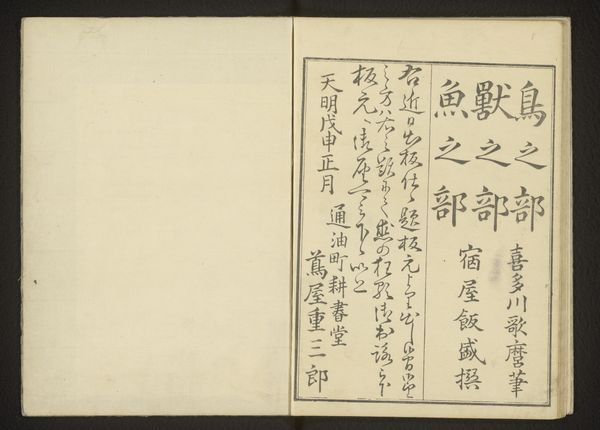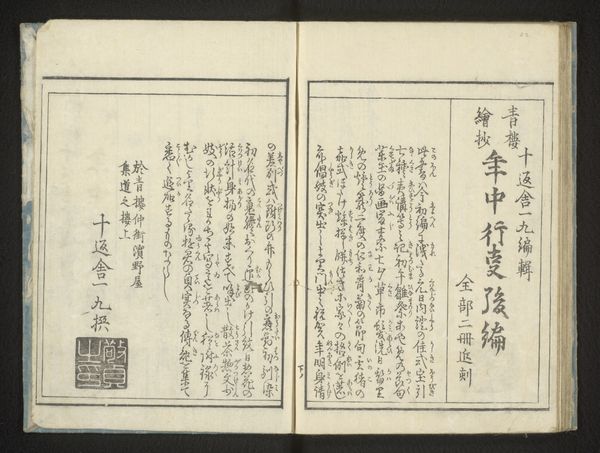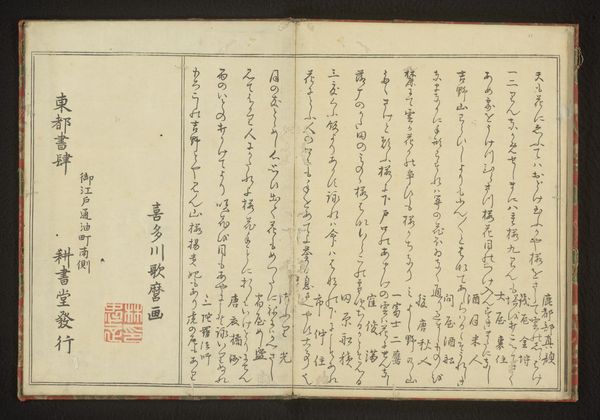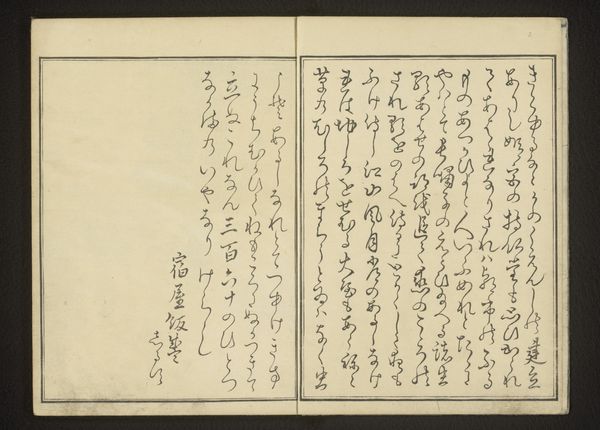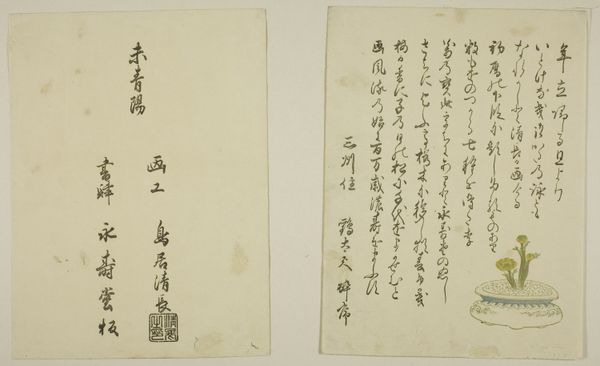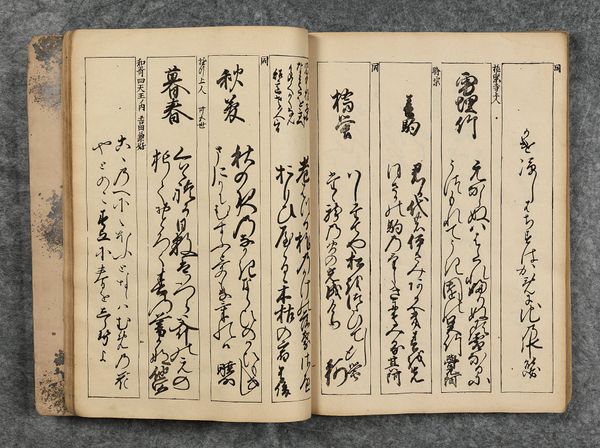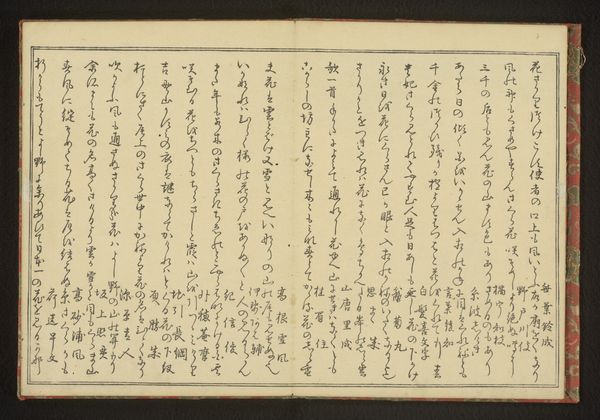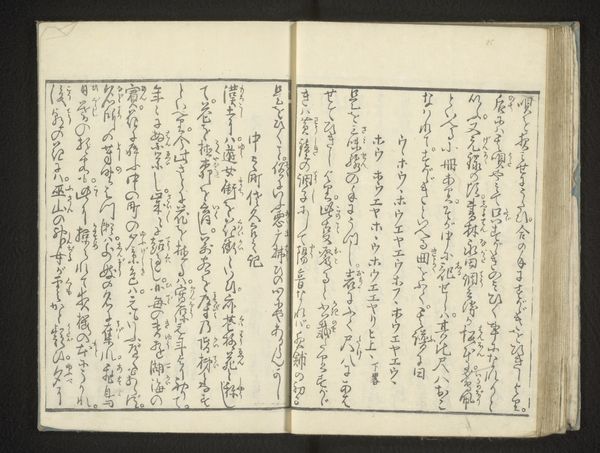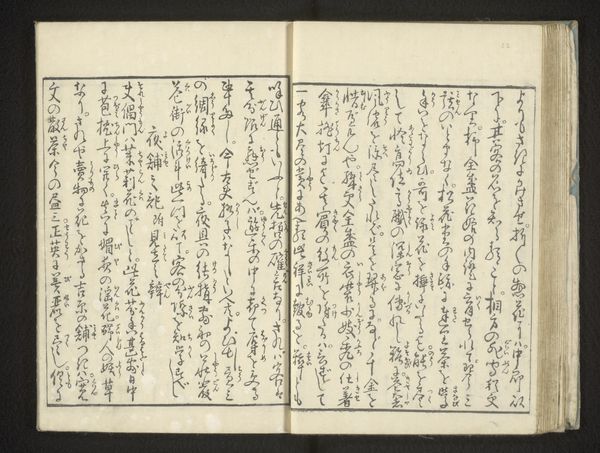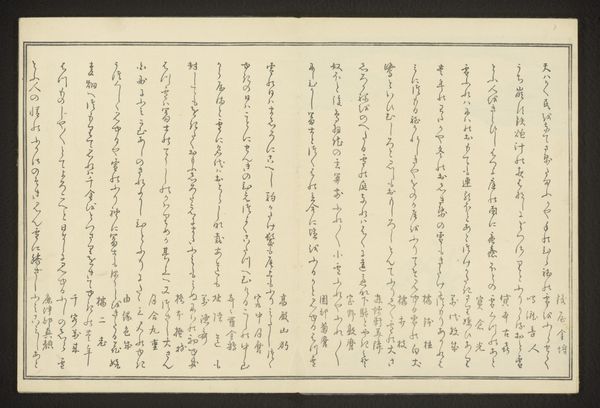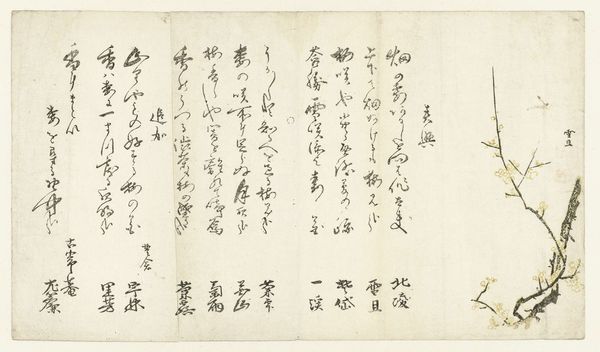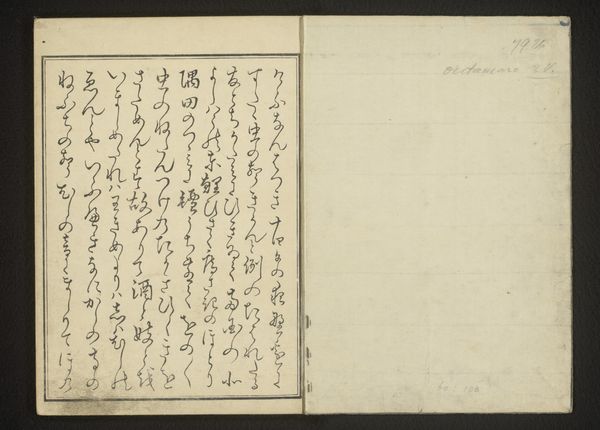
print, paper, typography, ink
# print
#
asian-art
#
ukiyo-e
#
paper
#
typography
#
ink
#
calligraphy
Dimensions: height 251 mm, width 187 mm
Copyright: Rijks Museum: Open Domain
Curator: This striking print, entitled "Advertisements and Colophon," dates back to about 1796 and was crafted by Kitagawa Utamaro. Editor: My immediate impression is one of stillness and control. It's deceptively simple, yet there's a rhythmic quality to the columns of text, almost like musical notation. What’s its original context? Curator: This particular example, housed here at the Rijksmuseum, blends visual and textual elements on paper with ink to act as a book advertisement. The inscription in the left panel denotes the publisher of Utamaro's works, Tsutaya Jūzaburō. This example of Ukiyo-e offers an insight into the commercial landscape of Edo-period Japan. The calligraphy has a real impact. Editor: The typography really situates the artwork in a social setting and speaks to access and literacy in that moment of history. The style suggests how much information and meaning were embedded within everyday objects and designs, things that perhaps would be glanced at rather than intensely studied as a print today. I am especially interested in how the image operates outside of traditionally understood ‘fine art’ contexts. It blurs the lines between advertisement, documentation and, as we now consider it, ‘art.’ Curator: Precisely! Look at how Utamaro integrates diverse symbolic layers: cultural, commercial, personal...it reflects the interconnected nature of art, commerce, and everyday life during the Edo period. What stands out is the symbolic intent woven into a commercial item; its emotional and artistic message survives the ages. Editor: Right, this pushes the artwork outside simple classifications, making the advertisement a document for resistance, preservation and access through both printed words and iconic brand design of the publishing house’s colophon. This would be revolutionary to consumers at the time and echoes to contemporary artists of color or those marginalized using creative tools to thrive. Curator: And with this image, one almost anticipates a broader, modern shift. Its visual narrative is remarkably enduring and makes us question the meaning we now attach to such historical artworks. Editor: Absolutely. Examining the image offers a look at commercialism while also understanding how different power structures influenced societal patterns and what it meant for disenfranchised or invisible artists. Curator: Thank you for highlighting these connections; they bring a fuller picture of the art. Editor: Thank you; understanding the social environment completes the artistic context.
Comments
No comments
Be the first to comment and join the conversation on the ultimate creative platform.
